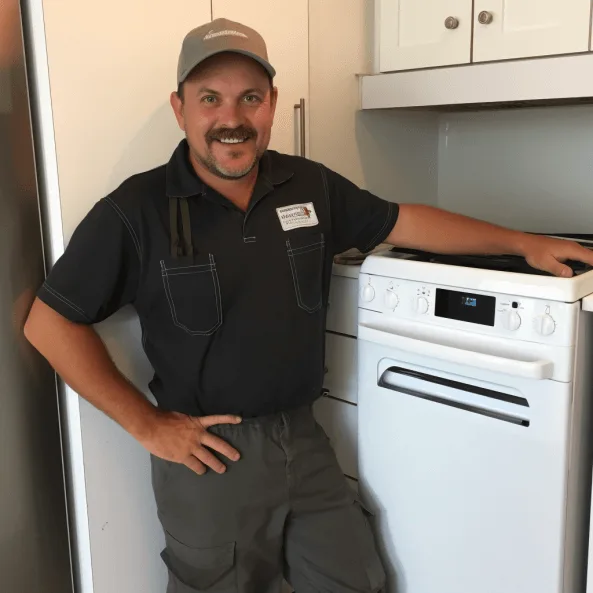Tired of endless laundry loads piling up? Ever wondered how to choose the perfect washer and dryer set for your home? Picture this: you’re standing in front of rows of appliances, feeling overwhelmed by the options. How do you decide which one is right for you?
In this article, you’ll uncover the secrets to selecting a washer and dryer that meet your needs perfectly. Say goodbye to the confusion and hello to efficient laundry days! You’ll learn valuable tips on size, features, and energy efficiency, making your decision-making process a breeze. Get ready to transform your laundry routine with the ideal washer and dryer pair tailored just for you.
Understanding Your Laundry Needs
When picking out a washer and dryer, Understanding Your Laundry Needs is key. Here are a few considerations:
- Family Size: Larger families might need bigger capacity.
- Space: Measure your space for the right fit.
- Frequency: Consider how often you do laundry.
- Fabrics: Different fabrics may require specific care.
- Energy Efficiency: Look for energy-saving options.
Remember, choosing appliances that suit your lifestyle can make a big difference in your daily routine.
Evaluating Available Space
When choosing a washer and dryer, measuring the available space is crucial. Here’s what to consider:
- Measure the space: Grab a tape measure and jot down the dimensions of the area where you plan to place your new appliances.
- Allow for clearance: Leave a few inches of space behind and around the units for airflow and connections.
- Check the doorway: Ensure the appliances can fit through doorways, hallways, and any other tight spots in your home.
- Consider stackability: If space is tight, look for stackable washer and dryer options to maximize vertical space.
Remember, optimal space planning can make a big difference in your laundry area’s efficiency.
| Statistics | |
|---|---|
| Up to 10 % of the refrigerator’s electricity usage | is used to cool space around it. |
Choosing Between Top-Load and Front-Load
When deciding between a top-load and front-load washer, consider the following:
- Top-Load: Convenient for adding clothes mid-cycle.
- Front-Load: More energy-efficient and effective at cleaning.
- Think about your laundry habits:
- If you prefer quick cycles and easy access, a top-load might suit you.
- For larger families with heavy laundry loads, a front-load could be more efficient.
Remember, front-load washers usually have a higher price tag but can save you money in the long run due to their superior energy efficiency.
Considering Energy Efficiency Ratings
When choosing a washer and dryer, energy efficiency is a key factor to help you save on utility bills in the long run. Look for appliances with the Energy Star label to ensure they meet high standards for energy efficiency.
Front-load washers are generally more energy-efficient than top-load washers. They use less water and require less electricity to operate, making them a cost-effective choice for your home.
Dryers with moisture sensors are also great for energy savings. These sensors detect when your clothes are dry and automatically shut off the machine, preventing unnecessary energy usage.
Did you know that high-efficiency appliances not only benefit the environment but also your wallet? Opting for energy-efficient models can lead to significant savings on your monthly utility bills.
To maximize energy efficiency, consider washing full loads of laundry to reduce the number of cycles and utilize cold water settings whenever possible. These simple steps can make a big difference in your energy consumption over time.
| Appliance Type | Energy Efficiency |
|---|---|
| Front-load Washer | High |
| Top-load Washer | Lower |
| Dryer with Sensor | Energy-saving |
Conclusion
You’ve learned how crucial it is to match your washer and dryer to your specific laundry needs. Considering factors like family size, fabric types, and energy efficiency will ensure you make the right choice. Evaluating your space is key for efficient planning. Remember, front-load washers are more cost-effective in the long run due to their energy efficiency. Opting for dryers with moisture sensors can also help you save on energy costs. By choosing high-efficiency appliances and adopting energy-saving practices like washing full loads and using cold water settings, you’re not only benefiting the environment but also your wallet. Make informed decisions that align with your needs and values.
Frequently Asked Questions
What factors should I consider when choosing a washer and dryer set?
When selecting a washer and dryer set, consider your family size, laundry frequency, fabric types, and energy efficiency for optimal performance and cost savings.
How important is space planning when it comes to laundry appliances?
Evaluating available space is crucial for planning the layout of your laundry area and ensuring that the washer and dryer set fits and functions efficiently.
What should I consider when choosing between a top-load and front-load washer?
When deciding between a top-load and front-load washer, consider factors like convenience, energy efficiency, and cost-effectiveness. Front-load washers are known for being more energy-efficient in the long run.
Why are dryers with moisture sensors recommended?
Dryers with moisture sensors are recommended for energy savings as they prevent over-drying, leading to lower energy consumption and cost savings.
How do high-efficiency appliances benefit consumers?
High-efficiency appliances benefit both the environment and consumers by reducing monthly utility bills, offering energy savings over time.
What are some tips for maximizing energy efficiency with laundry appliances?
To maximize energy efficiency, it is recommended to wash full loads, use cold water settings, and consider investing in high-efficiency appliances for long-term benefits.

Hi, I’m Charlie, and I cover all things laundry here at Appliance Mastery.
I’ve spent over eight years working on washing machines, dryers, and dishwashers. I also have a degree in mechanical engineering, which helps me understand how these appliances really work.
I try to make every guide clear and practical. If you’re stuck with a noisy dryer or a leaking washer, I’ll help you figure out what’s wrong and how to fix it.
